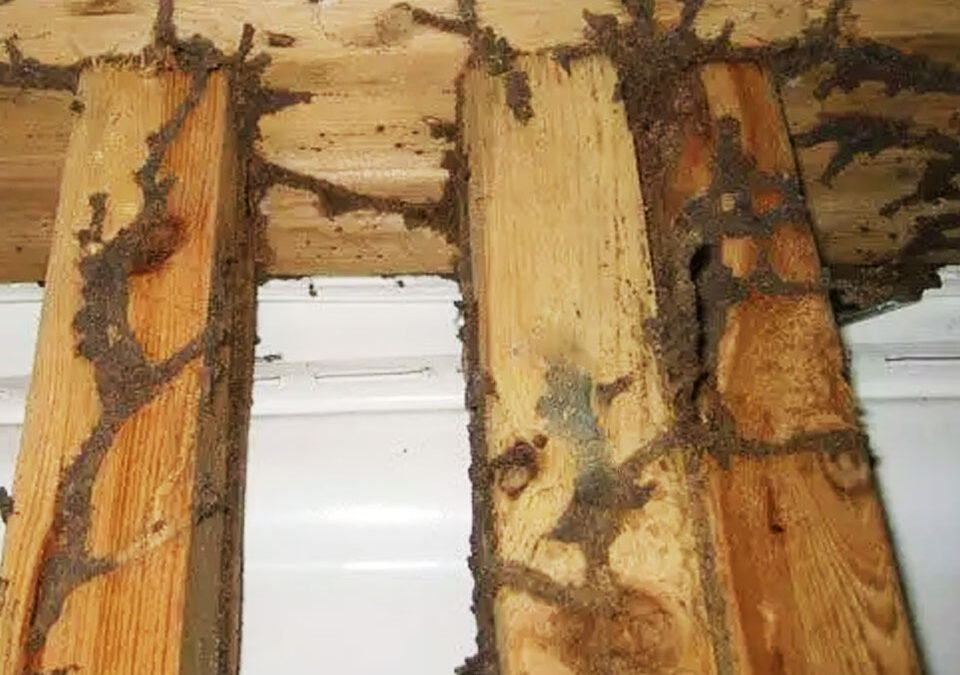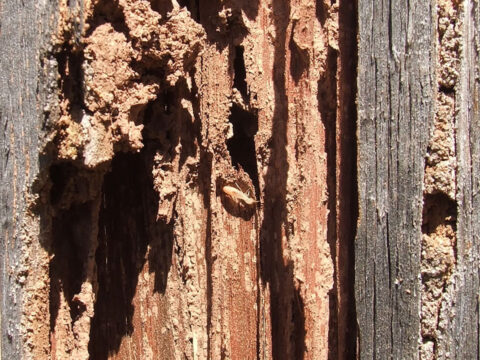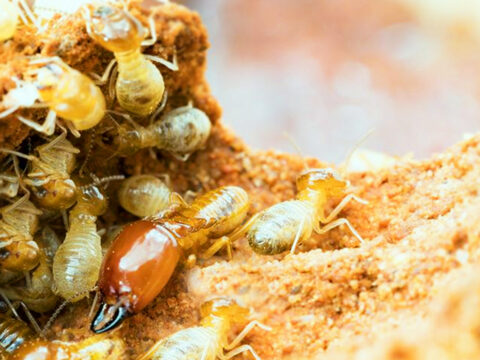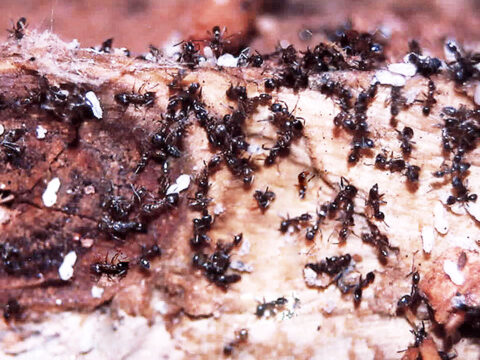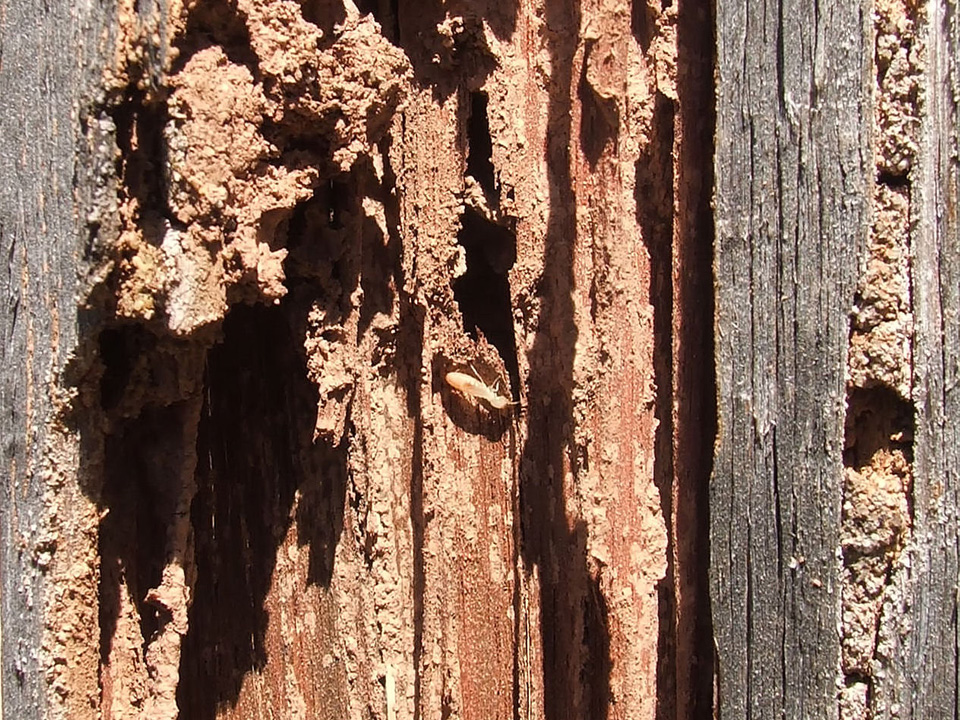
Can Your House Collapse From Termites?
February 23, 2022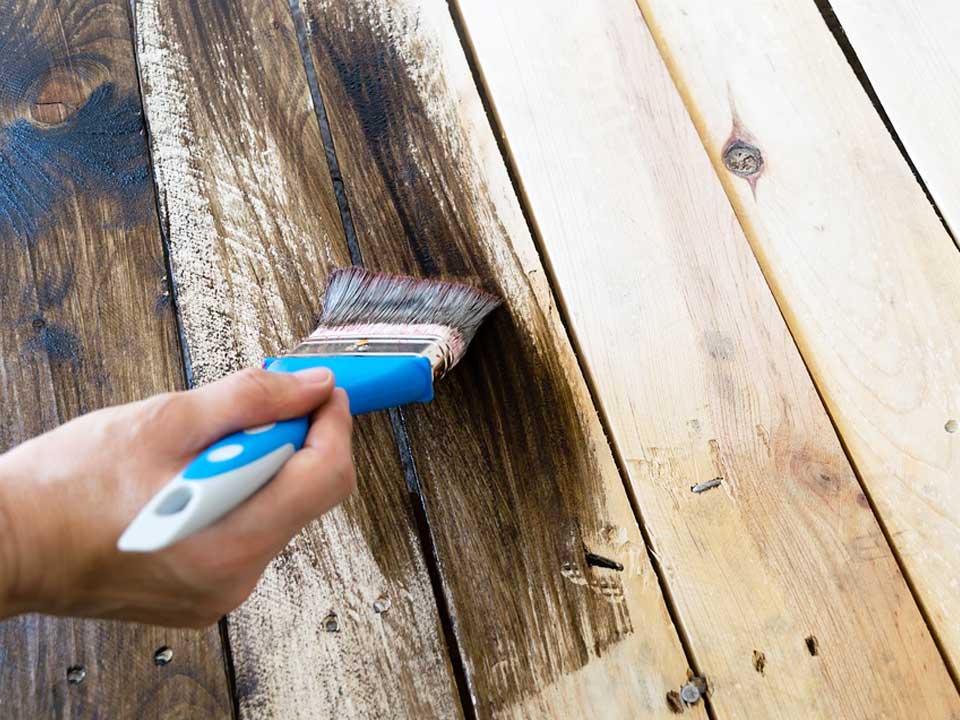
Will Painting Wood Prevent Termites?
April 13, 2022Termite infestation is common on timber material, which is why some homeowners opt for pressure-treated wood structures in their houses. However, many individuals think pressure-treated wood is decay and termite-proof, so they can use and leave it anywhere. In fact, although this may be correct in the short term, even pressure-treated wood is susceptible to termites in the long run. According to the USA construction codes, pressure-treated wood is termite-resistant and not termite-proof.
Below is an exclusive overview of pressure-treated lumber and whether termites can infest it.
What Does Pressure-Treated Mean For Wood?
Let’s start by explaining what pressure-treated wood means. Pressure-treated wood refers to one that has been injected with chemical preservatives that deter or are toxic to termites. The chemicals are forced into the wood’s pores by a vacuum pressure forming a barrier that repels wood-eating insects such as carpenter ants and termites as well as resisting decay.
Treated woods have different ratings based on penetration extent and expected preservative retention. The wood that is two inches or less in thickness is often rated above the ground and doesn’t last for long when in contact with soil.
Building codes might require using pressure-treated lumber in construction for below the ground installations, and anytime the lumber will contact the soil. It’s commonly used for fence posts, decking, lighting posts, mailbox, etc.
In the past, the common chemical used in treating timber was chromate copper arsenate, but it was later eradicated from the market for the toxicity of chromium and arsenic. Some environmentally friendly chemicals used include copper azole, micronized copper quaternary, sodium borate, and alkaline copper quaternary. The chemical preservatives get into the sapwood easier compared to heartwood. Therefore, woods with a higher sapwood percentage are often used in the treatment.
Will Termites Eat Pressure-Treated Wood?
Yes! Pressure-treated lumber is not fully termite-proof. Although termites will not damage the structure to the extent they do with untreated wood, they can still attack pressure-treated wood.
Termites will often eat pressure-treated lumber if it gets old enough, if they find an untreated edge, if the wood gets damp for long and starts rotting, or if there is no other wood available.
Let’s look deeper into the main ways termites can attack pressure-treated wood.
Incomplete Wood Treatment:
If the treatment does not entirely get into the middle part of a large wood piece, it will become susceptible to termite attacks. This is because the core of the timber will still be in its natural state.
Also, if the wood has a section that is left untreated, the ants might have a good opportunity to attack it. To prevent this from happening, both sides of the lumber end should be treated, or make the planks thinner if possible.
Broken Or Cut Edges:
Another issue that can cause termites to attack pressure-treated lumber is broken edges or newly cut woods. This mainly occurs during construction fitting. Often, when pressure-treated lumber is used in construction, there will be freshly cut timber ends, drill holes, and new notches that are not well-protected by the chemical preservatives.
If the treatment is not sufficiently deep, the newly exposed wood parts will not be protected. The freshly exposed section should be preserved onsite with preservatives by the homeowner or contractor to prevent this.
A Longer Period Of Use:
With time, the pressure-treated timber wears off and starts becoming susceptible to termite infestation. Remember that weather elements, including rain and moisture, often strip the wood of preserving chemicals over time.
Therefore, make sure that you can carry out appropriate maintenance and replace the wood if it’s damaged. Any lumber that has direct contact with the soil will eventually rot and become vulnerable to termite or carpenter ant attacks, whether pressure-treated or not.
How Long Can Pressure-Treated Timber Resist Termites?
Pressure-treated lumber is only durable for a particular period of time. The chemical preservatives in the treated wood gradually percolate out of the lumber over 7 to 10 years.
The outer one inch of the wood seems to hold on to the protection, while the inner lumber layer becomes susceptible to termite attacks. If there is any crack or hole where the pests can evade the outer, still protected surface and get into the inner wood layers, all bets will be off.
Termites can also create mud tubes over the outer surface of pressure-treated wood to get into the untreated wood. Therefore, when this time elapses, the wood structures begin to become susceptible to termite infestation.
The wood-boring pests are more than just a nuisance, they are a threat to your property!
The only solution to successfully eliminate your termite problem is to bring in a professional termite treatment company for continued and monitored treatment. Chem Free Exterminating is your local termite expert.
Our knowledgeable and experienced team offers an array of termite control services in Orange County, California, all designed for efficiency and affordability. Whether you’re building a new house or renovating an old one, we’ve got you covered. So pick up the phone and call us now!

